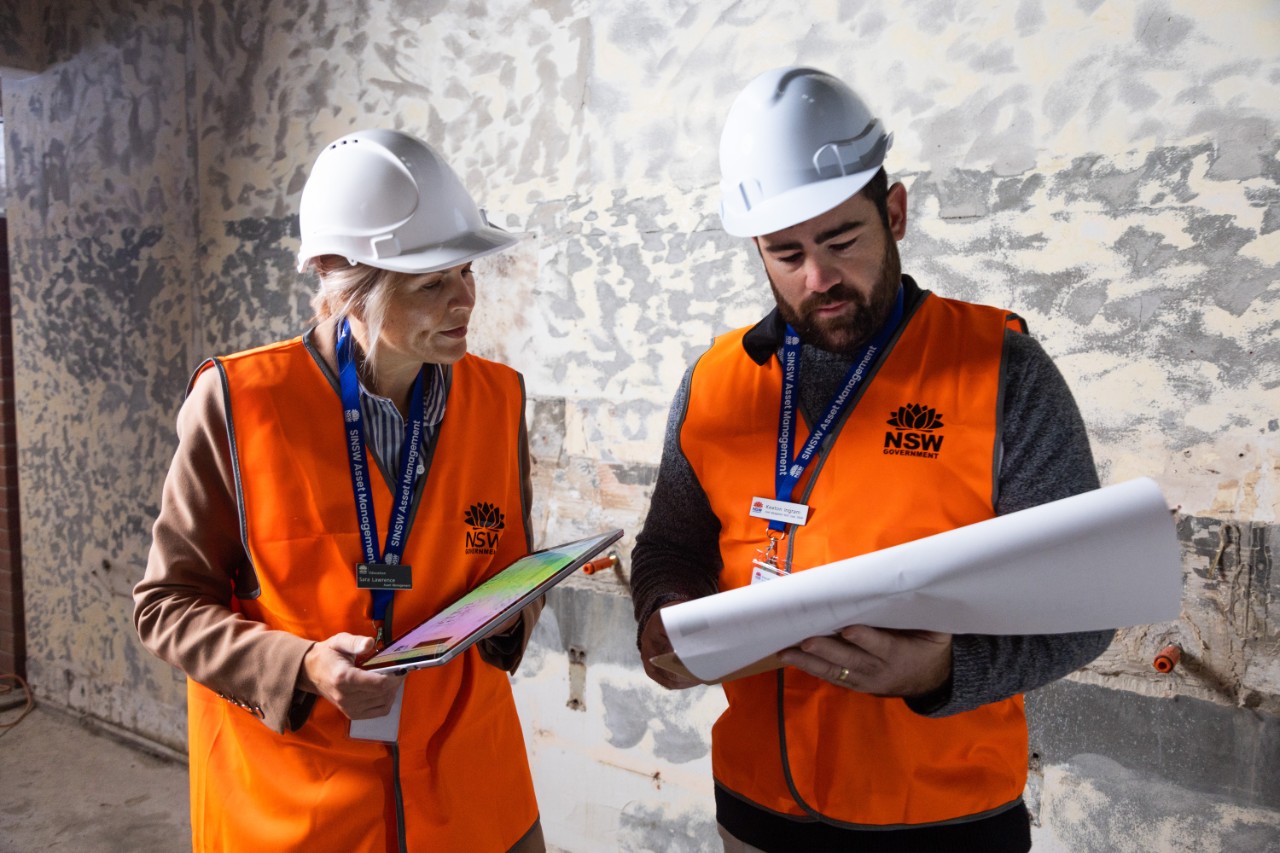Managing materials
The presence of materials like lead and asbestos or the potential exposure to such materials or substances can be an unsettling experience for students, staff and the wider community.
When hazardous material is identified at a school, an independent occupational hygienist is engaged to sample and test the material if required, and to risk assess the item and determine which safety measures are needed.
Sometimes remediation or removal is required. In these cases a licensed, approved contractor is appointed for the work, which may involve cordoning off the area, complete removal of the material, encasing the area in geofabric, and the repairing of damaged surfaces.
The independent hygienist performs air monitoring while remediation or removal work is underway. Once the area has been appropriately remediated and meets safety standards of SafeWork NSW, the independent hygienist issues a clearance certificate, allowing the building or area to safely return to normal use.
All work is done in accordance with SafeWork NSW regulations and NSW Department of Education’s Asbestos Management Plan.
All work is completed by licensed and accredited asbestos contractors and monitored by independent occupational hygienists in strict accordance with all applicable legislation, regulations, policies and guidelines.
SINSW also regularly updates and maintains the schools asbestos register, which keeps track of the presence of asbestos in all NSW schools.
To provide transparency in materials’ management in our public schools, recent works notifications are available to view on the schools’ webpage on this School Infrastructure website (use the search bar to find your school).
See listings for work taking place during school holiday periods.
How we manage materials
Asbestos
Asbestos was used widely in Australian building materials prior to 1990. Due to the age of many NSW public schools, asbestos-containing materials may be present.
If asbestos is bonded to a solid material such as concrete or vinyl and is non-friable (unable to be crushed under light pressure) it is considered a low health risk.
Can include vermiculite, a friable, powdery insulation material, commonly used as a ceiling coating to improve acoustics and aesthetics. They are commonly referred to as “popcorn ceilings”. However not all vermiculite contains hazardous materials.
To continue managing the presence of asbestos in government schools, SINSW maintains the asbestos register for each school and conducts regular testing during school holiday periods to identify and remediate or remove asbestos containing material.
For further information on asbestos you can view the NSW government website.
Lead
Lead was commonly used in materials such as paint, metal, sheeting and PVC products. Due to the age of many NSW state government schools, they may have lead materials on site.
Lead is commonly found in soil or paint in NSW state government schools. Lead is considered a low health risk provided it isn’t inhaled or ingested.
SINSW conducts regular testing during vacation periods to identify and remediate or remove lead located on school property.

Looking for information regarding asbestos management?
View the NSW Department of Education’s response, including the asbestos register.


